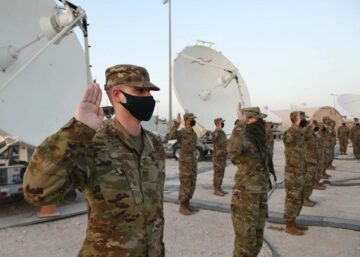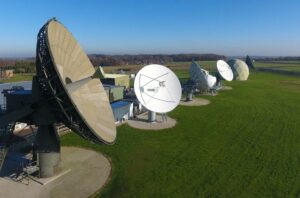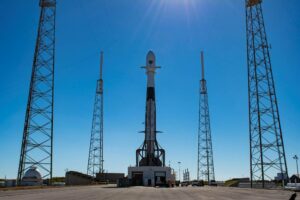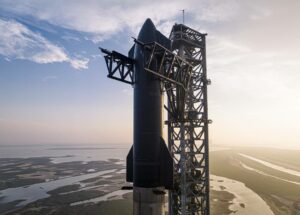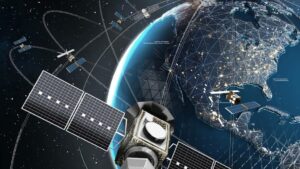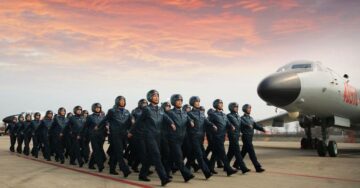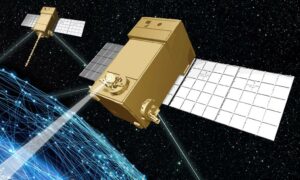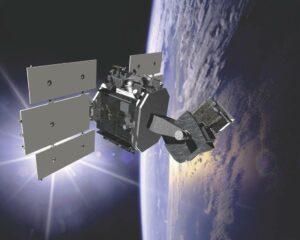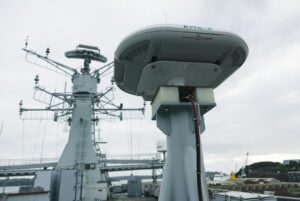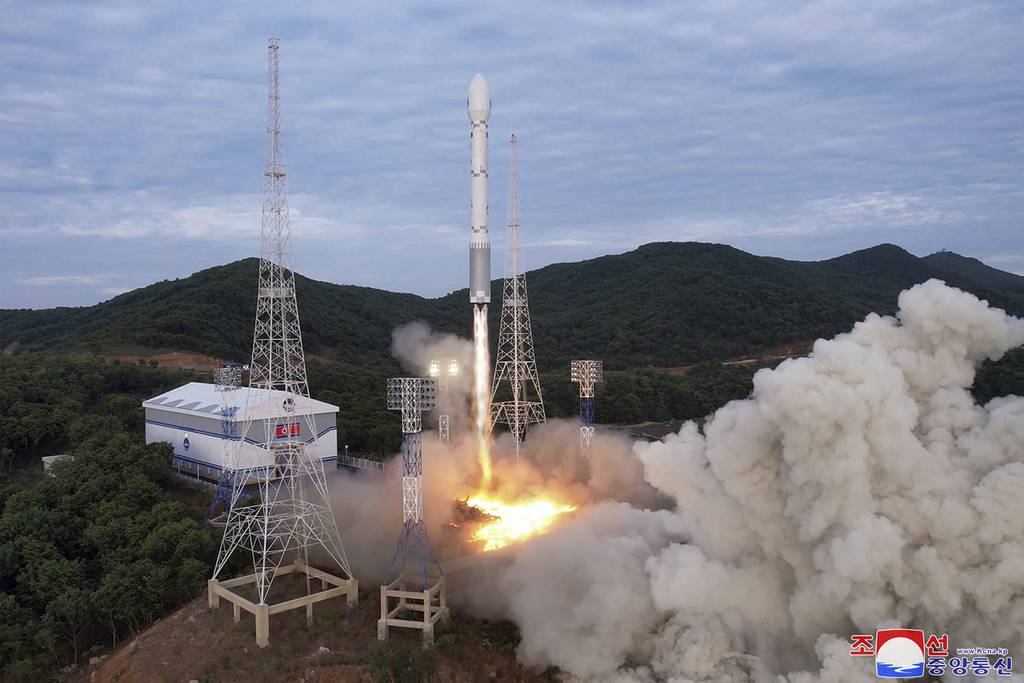
SEOUL, South Korea — North Korea claimed Wednesday to have successfully placed a spy satellite into orbit with its third launch attempt this year, demonstrating the nation’s determination to build a space-based surveillance system during protracted tensions with the United States.
The North’s claim could not immediately be independently confirmed. But the launch was certain to invite strong condemnation from the United States and its partners because the U.N. bans North Korea from conducting satellite launches, calling them covers for tests of missile technology.
The North’s space authorities said in a statement that its space launch vehicle placed the Malligyong-1 satellite into orbit on Tuesday night following liftoff from the country’s main launch center and an intended flight.
The statement said that leader Kim Jong Un observed the launch. It said the fired spy satellite would enhance North Korea’s war readiness in response to its rivals’ hostile military moves and that more would be launched at an early date.
South Korea and Japan said earlier that they detected the North Korean launch. The Japanese government briefly issued a J-Alert missile warning for Okinawa, urging residents to take shelter inside buildings or underground. South Korea’s military said it maintains its readiness in close coordination with the U.S. and Japan.
“Even if North Korea calls it a satellite, the firing that uses ballistic missile technology is a clear violation to related United Nations Security Council resolutions,” Japanese Prime Minister Fumio Kishida said. “It is also a serious threat that affects the safety of the people.”
A spy satellite is among the key military assets coveted by North Korean leader Kim Jong Un, who wants to modernize his weapons systems to cope with what he calls escalating U.S. threats. North Korea attempted to launch a spy satellite twice earlier this year, but both launches ended in failure due to technical issues.
North Korea had vowed a third launch would take place sometime in October. But it didn’t follow through or give a reason for not following that launch plan. South Korean officials have said the delay occurred likely because North Korea was receiving Russian technological assistance for its spy satellite launch program.
North Korea and Russia, both U.S. adversaries that are increasingly isolated globally, have been pushing hard to expand their relationships in recent months. In September, Kim traveled to Russia’s Far East to meet President Vladimir Putin and visit key military sites, touching off intense speculation of a weapons deal between the two nations.
The alleged deal involves North Korea supplying conventional arms to refill Russia’s ammunition stock drained in its war with Ukraine. In return, foreign governments and experts say that North Korea seeks Russian help in enhancing its nuclear and other military programs.
During Kim’s Russia visit, Putin told state media that his country would help North Korea build satellites, saying Kim “shows keen interest in rocket technology.”
Russia and North Korea dismissed the allegation on their arms transfer deal as groundless. Such a deal would violate U.N. bans on any weapons trading involving North Korea.
The White House said in October that North Korea had delivered more than 1,000 containers of military equipment and munitions to Russia. But South Korean Defense Minister Shin Wonsik said this week that North Korea had sent about 3,000 such containers to Russia.
Kim previously said North Korea needed spy satellites to better monitor South Korean and U.S. activities and enhance the effective use of its nuclear missiles. But South Korea has said a North Korean spy launch program also involves its efforts to manufacture more powerful intercontinental ballistic missiles.
“If North Korea succeeds in launching the military reconnaissance satellite, it would signify that North Korea’s ICBM capabilities have been taken to a higher level,” South Korean President Yoon Suk Yeol said in written responses to questions from The Associated Press last week. “Therefore, we will have to come up with reinforced countermeasures.”
Leif-Eric Easley, a professor at Ewha University in Seoul, said Tuesday’s launch raises more questions than answers, such as whether the North Korean satellite actually performs reconnaissance functions and whether Russia provided technical and even material assistance.
“What is already clear is that this is not a one-off event but part of a North Korean strategy of prioritizing military capabilities over economic development, threatening rather than reconciling with South Korea, and further aligning with Russia and China instead of pursuing diplomacy with the United States,” Easley said.
Since last year, North Korea conducted about 100 missile tests in a bid to establish a reliable arsenal of nuclear weapons targeting the U.S. and its allies. Many foreign experts say North Korea has some last remaining technologies to master to acquire functioning nuclear missiles.
But they say that possessing a rocket that can place a satellite into orbit would mean North Korea can build a missile capable of carrying a warhead with a similar size of the satellite.
South Korea’s military recently suggested it could suspend a 2018 inter-Korean agreement to reduce tensions and resume front-line aerial surveillance and firing exercises, if the North went ahead with its launch.
Japan’s coast guard said earlier Tuesday that North Korea had told Tokyo that it would launch a satellite sometime between Wednesday and Nov. 30.
The U.S., South Korea and Japan subsequently urged North Korea to cancel the launch. They had earlier condemned North Korea’s two previous satellite launches as violations of U.N. Security Council resolutions. But permanent council members Russia and China have stymied any Security Council response.
In June, Kim’s sister and senior ruling party official, Kim Yo Jong, called the U.N. Security Council “a political appendage” of the United States. She slammed the U.N. council for allegedly being “discriminative and rude,” saying it only takes issue with the North’s satellite launches while thousands of satellites launched by other countries are already operating.
In the two previous launches in May and August, North Korea used its new Chollima-1 rocket to carry the Malligyong-1 reconnaissance satellite.
In the first attempt, the North Korean rocket carrying the satellite crashed into the ocean soon after liftoff. North Korean authorities said the rocket lost thrust after the separation of its first and second stages. After the second launch failure, North Korea said there was an error in the emergency blasting system during the third-stage flight.
South Korea retrieved debris from the first launch and called the satellite too crude to perform military reconnaissance.
Some civilian experts said North Korea’s Malligyong-1 satellite is likely capable only of detecting big targets like warships or planes. But by operating several such satellites, North Korea could still observe South Korea at all times, they said. In April, Kim Jong Un said North Korea must launch several satellites.
Besides spy satellites, Kim is eager to introduce other sophisticated weapons such as more mobile ICBMs, nuclear-powered submarines and multi-warhead missiles. Observers say Kim would ultimately want to use an enlarged weapons arsenal to wrest greater U.S. concessions like sanctions relief when diplomacy resumes.
In response, the U.S. and South Korea have been expanding their regular military exercises that sometimes included U.S. strategic assets such as long-range bombers, a nuclear-armed submarine and aircraft carriers. On Tuesday, the USS Carl Vinson aircraft carrier and its battle group arrived at a South Korean port in a fresh demonstration of strength against North Korea.
Yamaguchi reported from Tokyo.
- SEO Powered Content & PR Distribution. Get Amplified Today.
- PlatoData.Network Vertical Generative Ai. Empower Yourself. Access Here.
- PlatoAiStream. Web3 Intelligence. Knowledge Amplified. Access Here.
- PlatoESG. Carbon, CleanTech, Energy, Environment, Solar, Waste Management. Access Here.
- PlatoHealth. Biotech and Clinical Trials Intelligence. Access Here.
- Source: https://www.defensenews.com/flashpoints/2023/11/21/north-korea-claims-it-successfully-put-spy-satellite-into-orbit/
- :has
- :is
- :not
- $UP
- 000
- 1
- 100
- 2018
- 2023
- 30
- 70
- 8
- a
- About
- acquire
- activities
- actually
- After
- against
- Agreement
- ahead
- aircraft
- aligning
- All
- alleged
- allegedly
- already
- also
- ammunition
- among
- an
- and
- answers
- any
- April
- ARE
- arms
- arrived
- Arsenal
- AS
- Assets
- Assistance
- associated
- At
- attempt
- attempted
- AUGUST
- Authorities
- Bans
- Battle
- BE
- because
- been
- being
- Better
- between
- bid
- Big
- both
- briefly
- build
- but
- by
- called
- calling
- Calls
- CAN
- capabilities
- capable
- Carl
- carriers
- carry
- carrying
- Center
- certain
- China
- claim
- claimed
- claims
- clear
- Close
- Coast
- come
- concessions
- Condemned
- conducted
- conducting
- CONFIRMED
- Containers
- conventional
- coordination
- could
- Council
- council members
- countries
- country
- country’s
- covers
- coveted
- Crashed
- crude
- Date
- deal
- Defense
- delay
- delivered
- demonstrating
- detected
- determination
- Development
- Diplomacy
- drained
- due
- during
- eager
- Earlier
- Early
- East
- Economic
- Economic Development
- Effective
- efforts
- emergency
- ended
- enhance
- enhancing
- equipment
- error
- establish
- eugene
- Even
- Event
- Expand
- expanding
- experts
- Failure
- far
- fired
- firing
- First
- flight
- follow
- following
- For
- foreign
- fresh
- from
- front-line
- functioning
- functions
- further
- Give
- Globally
- Government
- Governments
- greater
- Group
- Guard
- had
- Hard
- Have
- he
- help
- higher
- his
- House
- HTTPS
- if
- images
- immediately
- in
- included
- increasingly
- independently
- inside
- instead
- intended
- InterContinental
- interest
- into
- introduce
- invite
- involves
- involving
- isolated
- issue
- Issued
- issues
- IT
- ITS
- Japan
- Japanese
- jpg
- june
- Keen
- Key
- Kim
- korea
- Korea’s
- Korean
- Last
- Last Year
- launch
- launched
- launches
- launching
- leader
- Level
- like
- likely
- lost
- Main
- maintains
- many
- master
- material
- May..
- mean
- Media
- Meet
- Members
- Military
- minister
- missiles
- Mobile
- modernize
- Monitor
- months
- more
- moves
- must
- National
- Nations
- needed
- New
- night
- North
- North Korea
- nov
- Nov. 21
- nuclear
- observe
- observed
- observers
- occurred
- ocean
- october
- of
- off
- official
- officials
- on
- only
- operating
- or
- Orbit
- Other
- over
- part
- party
- People
- perform
- performs
- permanent
- Place
- placed
- plan
- Planes
- plato
- Plato Data Intelligence
- PlatoData
- political
- powerful
- president
- press
- previous
- previously
- Prime
- prime minister
- prioritizing
- Professor
- Program
- Programs
- provided
- pursuing
- Pushing
- put
- Putin
- Questions
- raises
- rather
- Readiness
- reason
- receiving
- recent
- recently
- reconciling
- reduce
- regular
- related
- Relationships
- reliable
- relief
- remaining
- Reported
- residents
- response
- responses
- resume
- return
- rocket
- ruling
- Russia
- russian
- s
- Safety
- Said
- Sanctions
- satellite
- satellites
- say
- saying
- Second
- security
- Seeks
- senior
- sent
- Seoul
- September
- serious
- several
- she
- Shelter
- Shows
- signify
- similar
- sister
- Sites
- Size
- some
- sometimes
- Soon
- sophisticated
- South
- South Korea
- south korean
- Space
- space-based
- speculation
- stages
- State
- Statement
- States
- Still
- stock
- Strategic
- Strategy
- strength
- Subsequently
- Successfully
- such
- surveillance
- Suspend
- system
- Systems
- Take
- taken
- takes
- targeting
- targets
- Technical
- technological
- Technologies
- Technology
- tensions
- tests
- than
- that
- The
- their
- Them
- There.
- they
- Third
- this
- this week
- this year
- thousands
- threat
- threats
- Through
- thrust
- times
- to
- tokyo
- told
- too
- touching
- Trading
- transfer
- traveled
- Tuesday
- tv
- Twice
- two
- u.s.
- Ukraine
- Ultimately
- UN
- United
- united nations
- United States
- university
- urging
- use
- used
- uses
- vehicle
- VIOLATION
- Violations
- Visit
- want
- wants
- war
- warning
- was
- we
- Weapons
- Wednesday
- week
- went
- What
- when
- whether
- while
- white
- White House
- WHO
- will
- with
- would
- written
- year
- zephyrnet

